I Tried 6 Store-Bought Pizza Crusts & the Best Was Restaurant-Worthy
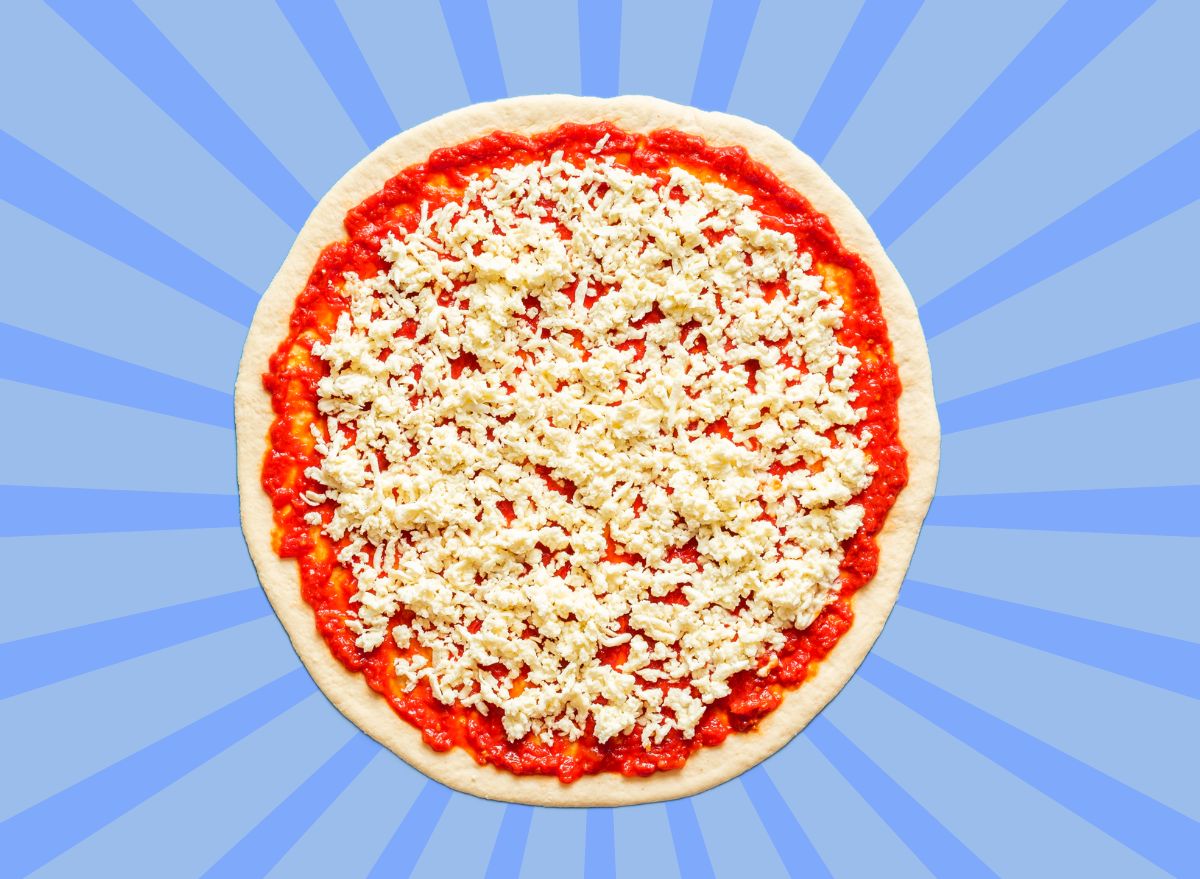
It's been said that there's no such thing as bad pizza, but you can't deny that some pies are better than others. And many seasoned pizza chefs will tell you that the difference-maker often lies in the crust. Whether you love your slices thin and crisp or soft and chewy, great dough can be the difference between a memorable slice and a lackluster one.
These days, as easy-to-use, at-home pizza ovens become increasingly popular, more people are staying in for pizza night. Even if you're using a conventional oven, there are plenty of options for store-bought crusts and doughs to build your favorite pies.
I tracked down six of the most common store-bought pizza crusts to help identify the best-tasting and best-looking option on the market. These included three pre-made crusts, two dough balls, and one pre-rolled dough.
For this taste test, I prepared each crust according to the package instructions. I topped all pizzas with the same simple toppings: pizza sauce (I used Yo Mama's Classic Pizza Sauce), shredded parmesan, and mozzarella cheese.
To assess how the crusts stacked up against each other, I tasted each pizza a few minutes out of the oven and judged each based on looks, taste, texture, and sturdiness. I also considered how easy the crusts were to prepare and work with.
Here's how these six pizza crusts rank in descending order:
Jus-Rol Family-Style Pre-Rolled Pizza Dough
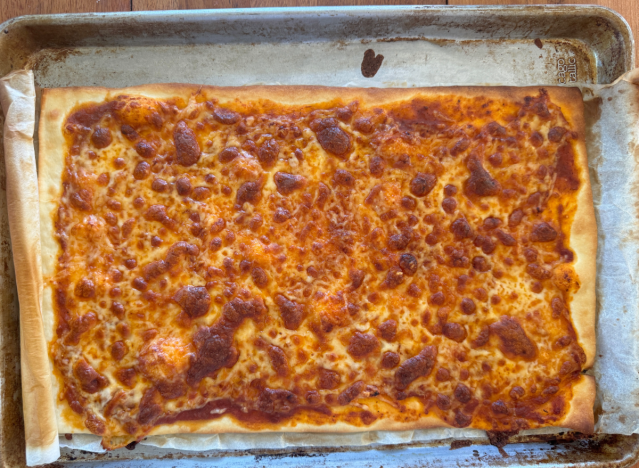
Calories: 140
Fat: 4 g (Saturated Fat: 1.5 g)
Sodium: 390 mg
Carbs: 21 g (Fiber: 1 g, Sugar: 0 g)
Protein: 4 g
This rectangular dough comes rolled like a sheet of puff pastry in a piece of thin parchment paper that doubles as a liner for your baking sheet (making clean-up easier). A 14-ounce package cost me $3.99 at Stop & Shop. It was the biggest dough in this test and produced 8 large square slices that would easily feed a hungry group of kids, as long as they don't have highly discerning palates.
The look: The long rectangular crust is slightly shorter than a standard half sheet pan, so it fits snugly inside one for baking. It's about a quarter-inch thick and perfectly uniform. The crust readily unrolls to be topped. After baking, the edges become quite crisp–almost cracker-like–and golden brown. The crust edges are smooth, stiff, and shiny, but the center of the pizza remains pretty soft and even a bit soggy.
The taste: This crust's crunchy cracker-like texture was its biggest downfall. It was dry and crumbly. This crust would benefit flavor-wise from additional toppings like veggies or more cheese, but structurally, the center was so soft, I'm not sure it would hold them up.
Banza Pizza Crust Made from Chickpeas
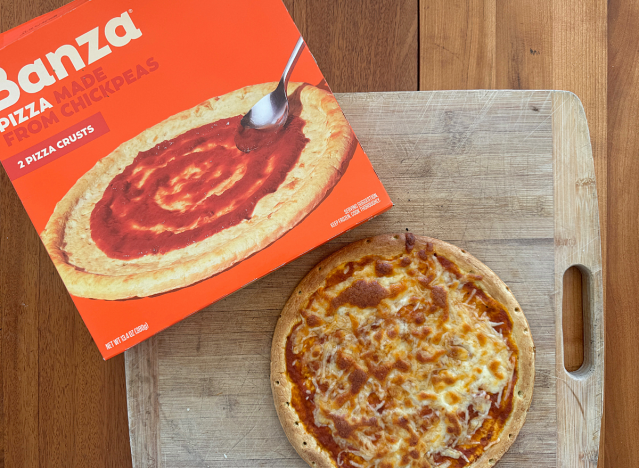
Calories: 150
Fat: 6 g (Saturated Fat: 2 g)
Sodium: 135 mg
Carbs: 22 g (Fiber: 3 g, Sugar: 1 g)
Protein: 4 g
Banza is known for making all kinds of products using the mighty chickpea, from waffles to pasta. Its pizza crusts come in a package of two pre-shaped rounds that are gluten-free and slightly higher in protein and fiber than your typical store-bought crust (offering 4 grams and 3 grams, respectively, per serving). I found these crusts at Whole Foods for $7.64.
The look: Straight out of the box, the 9-inch crusts are basic-looking. They're pale and pock-marked with divots that presumably helped with par-cooking at the factory. The crusts have a slight indent around the border to mark a half-inch thick edge. After baking, the crust takes on some nice browning. Don't expect any doughy air pockets or satisfying bubbles on this crust. Rather, it's uniformly flat and crisp.
The taste: The crust doesn't taste like chickpeas, if that's a concern. In fact, the flavor is quite mild–if not slightly bland. The crust is thin and crisp on the edges but floppy in the center after baking. There's no chew or pull to the crust (as to be expected with anything gluten-free), but it does the job well enough.
Boboli 12-inch Original Pizza Crust
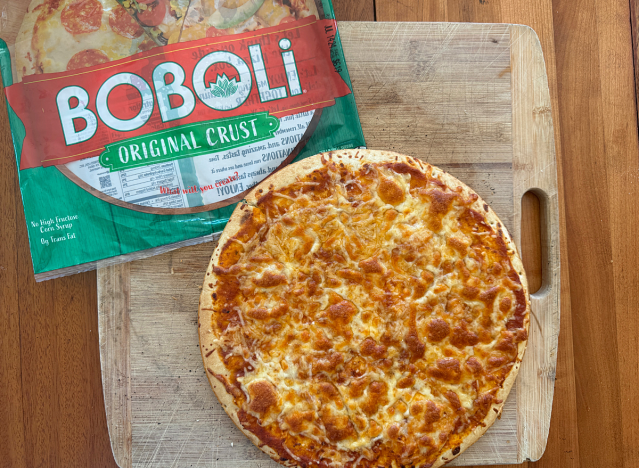
Calories: 140
Fat: 2.5 g (Saturated Fat: 1 g)
Sodium: 290 mg
Carbs: 26 g (Fiber: 1 g, Sugar: 1 g)
Protein: 5 g
Boboli was the only shelf-stable crust I tested. This 12-inch version (the brand also has an 8-inch size) is ample enough to feed a crowd and requires no thawing, rolling, or even a baking sheet to prepare (it cooks directly on the oven rack). I paid $6.19 for this one at my local Star Market.
The look: The un-topped crust is soft, doughy, and flexible. It has a light coating of baked-on shredded mozzarella cheese and is thicker than any other pre-shaped crust I tried. This crust browned less than the others in the oven and didn't change much in thickness.
The taste: If you like a thicker, doughier crust, Boboli might be for you. After baking, the dough stays soft, fluffy, and airy throughout. It may hold more toppings than thinner pizzas, thanks to its sturdiness and size. I noticed a chemical-like flavor in the background that I've tasted in frozen pizzas before. I'd guess it's from one of the preservatives that keep this crust shelf-stable for so long.
Caulipower Cauliflower Pizza Crusts
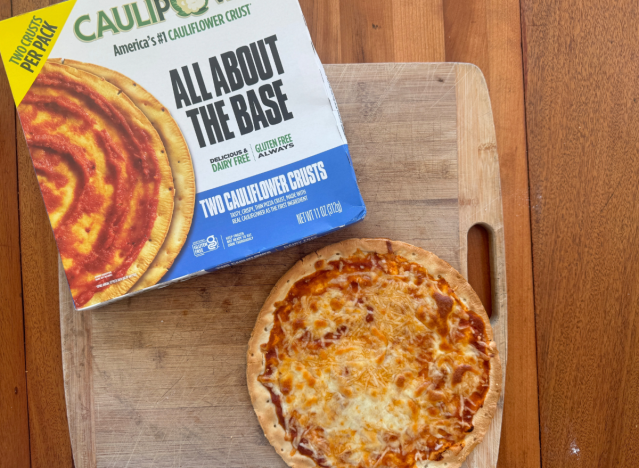
Calories: 170
Fat: 0.5 g (Saturated Fat: 0.5 g)
Sodium: 170 mg
Carbs: 28 g (Fiber: 1 g, Sugar: 1 g)
Protein: 2 g
The first ingredient in this pre-shaped round crust is, in fact, cauliflower, followed by brown and white rice flour, corn, and tapioca starch. This is another gluten-free crust that comes ready to top and bake straight from the box. A pack of two cost me $11.99 at Stop & Shop.
The look: The Caulipower crust was thinner, paler, and more delicate than the pre-shaped Banza crust. It has the same dimples from pre-cooking as Banza, but was more wrinkly and flaky before adding the toppings. After baking, the crust became light brown on the edges and crisped up quite a bit.
The taste: This crust was sturdier and crunchier through the center than most, so it's a good option for fans of thin, crisp crusts. It doesn't have the classic doughy, toothsome texture or flavor of a wheat-based pizza crust, but it held up well to toppings and resisted sogginess.
Whole Foods Pizza Dough Ball
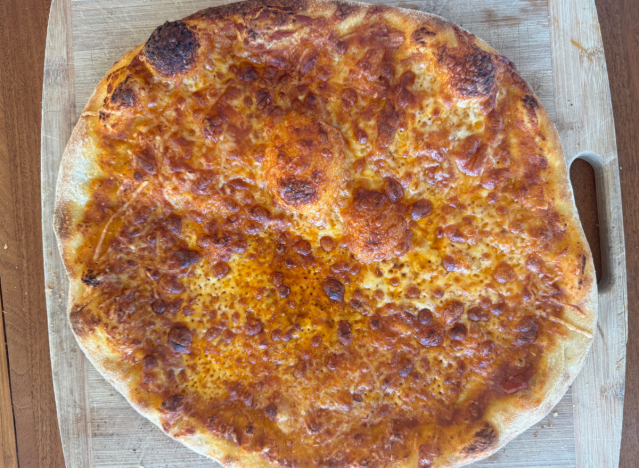
Calories: 245
Fat: 1 g (Saturated Fat: 1.5 g)
Sodium: 365 mg
Carbs: 47 g (Fiber: 1 g, Sugar: 0 g)
Protein: 11 g
This store-brand refrigerated dough ball is easy to work with and makes great restaurant-style pizzas at home. It's made with the six basic ingredients that most pizzaiolos will tell you are essential to excellent dough: flour, water, salt, olive oil, yeast, and a touch of sugar to feed the yeast. One dough ball cost me $4.99 at Whole Foods.
The look: This dough ball is smooth, supple, and relaxes easily. It can be rolled into a neat circle without much effort, or gently nudged and pulled if you don't have a rolling pin. After baking, the crust developed several round air pockets and the crust edges puffed up beautifully. The center stayed thin and sturdy, but still chewy and floppy enough to fold.
The taste: The Whole Foods crust has the subtle tang of sourdough. It's sturdy and thicker than my winning pick, which makes it a good option for topping lovers. The edges became a bit tougher and drier than I like, so some bites required more work, but the thin center was just chewy enough.
Birrittella's Piza Dough
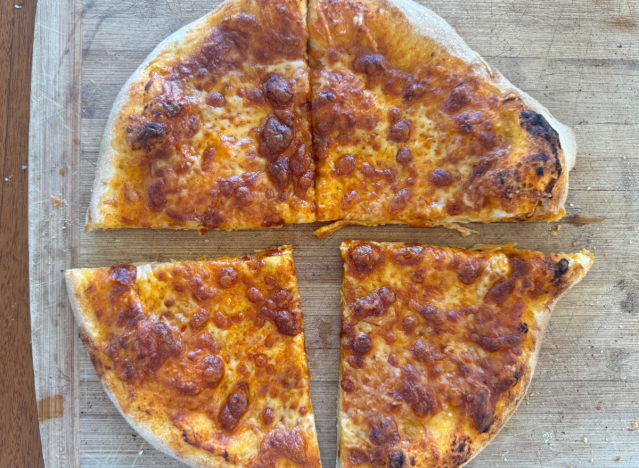
Calories: 130
Fat: 1 g (Saturated Fat: 0 g)
Sodium: 260 mg
Carbs: 25 g (Fiber: 1 g, Sugar: 0 g)
Protein: 5 g
This refrigerated ready-to-roll pizza crust comes from a small family-owned New York-based dough company that sells vacuum-sealed dough balls in grocery stores throughout the Northeast with shipping nationwide. It was the most affordable product in this entire survey—just $3.59 at Stop & Shop.
The look: This is a classic-looking dough ball just like you'd expect to find in any New York pizza parlor. It's sold frozen or refrigerated and needs to be brought to room temperature before rolling and topping. With just five ingredients (including water), this is about as simple a store-bought crust as you can find. It produces fluffy, chewy thin-crust pizzas with a big, airy crust that you'll want to tear into.
The taste: The Birrittella's pizza was light and airy on the edges and stretchy, chewy, and thin in the center. It folds like a classic New York slice and brings its own savory, slightly sour flavor to the table. Instead of fading into the background or drying out the toppings like several other store-bought crusts I tried, this dough adds something to your homemade pizza–and it's something you'll want to come back to for seconds, or even thirds. The minor amount of extra work it takes to roll and shape the dough is well worth the effort for a restaurant-like experience at home.









